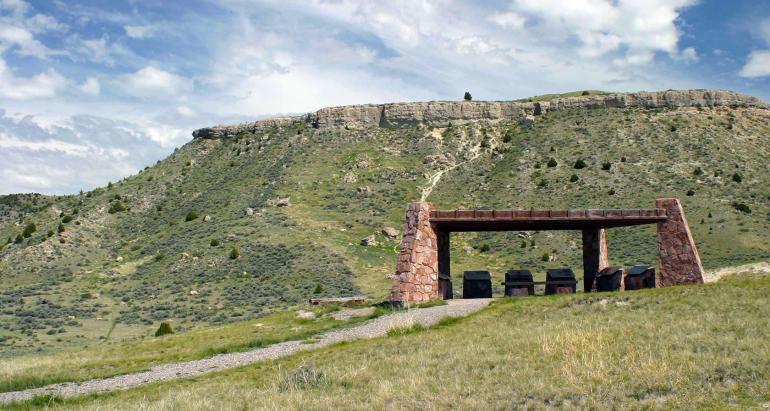Montana Fish, Wildlife & Parks Winter Update
Just a Hop, Skip, and Jump from Bozeman
Not far from bustling Bozeman is a real blast from the past. A high limestone cliff situated at the edge of the Gallatin Valley marks the site of the Madison Buffalo Jump State Park, a unique and important Native American historical and cultural site. The buffalo jump or "pishkun" was used as recently as 200 years ago by Native Americans to stampede herds of bison to their deaths. Without horses or guns, the native people lured grazing bison over the cliff and used the hides, meat, marrow, horns, and bones for life’s essentials: food, shelter, and clothing. The introduction of horses led to the abandonment of the site, but the park serves now as a tribute to these early inhabitants and allows visitors to imagine the amazing events that took place there. The Madison Buffalo Jump State Park is located 23 miles west of Bozeman on I-90 at the Logan exit, then seven miles south on Buffalo Jump Road. For more information visit fwp.mt.gov.
Committed to Comprehensive Conservation
Did you know that Montana has a comprehensive conservation strategy for fish and wildlife? Adopted in 2006, the state’s Comprehensive Fish and Wildlife Conservation Strategy is an exhaustive analysis of more than 600 species of birds, mammals, fish, reptiles, amphibians, crayfish, and mussels and the places where they live. Montana’s strategy is among 56 prepared by state and territorial wildlife agencies and funded by the federally created State Wildlife Grant program. Montana has already used some of the funds to survey prairie fish, restore native Arctic Grayling and Westslope Cutthroat trout, study sauger genetics and sauger movements in the Yellowstone River, investigate the status of native burbot, support management of grizzly bears and gray wolves, conserve black-tailed prairie dogs, and conduct a statewide inventory of small mammals. Ultimately, the strategy will help define a more integrated approach to the stewardship of all wildlife species with additional emphasis on species of concern and habitats at risk. The goal is to shift the focus from single species management and highly specialized individual efforts to a more geographically based, landscape-oriented fish and wildlife conservation effort. For more information, visit fwp.mt.gov/specieshabitat/strategy/default.html.
Nature Made Easier For Teachers and Students
Montana teachers seeking new tools to connect students to the state’s natural world can now turn to the FWP's new "Discover Montana Ecosystems" website. The site provides educators with new, interactive, and entertaining learning opportunities aimed at increasing their students’ awareness and understanding of the flora, fauna, and natural processes that are a part of life in Montana. Much of the information on the site is associated with the state’s Comprehensive Fish and Wildlife Conservation Strategy. Visit the new website at fwp.mt.gov/education/ecosystem/.
Mel Frost is the information and education manager for region 3 of the Montana Fish, Wildlife & Parks department.






